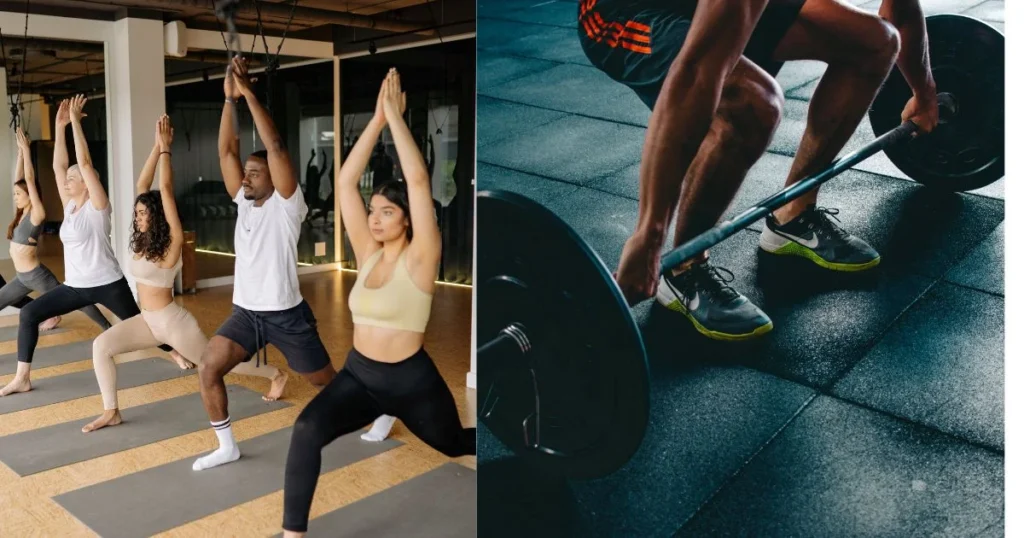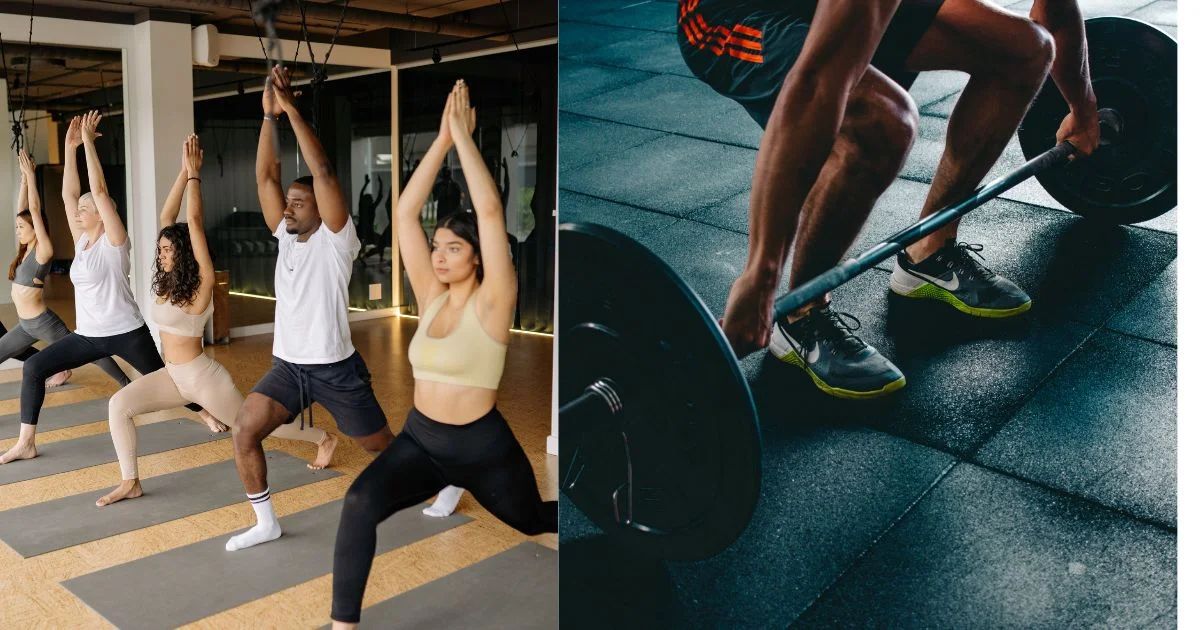Is Yoga Actually a Good Workout?
Yoga has become increasingly popular in recent years as a form of exercise that offers not only physical benefits but also mental and emotional benefits. However, some people may still question whether yoga is actually a good workout. After all, yoga is often associated with gentle stretching and relaxation, rather than intense physical exertion.
The truth is that yoga can be a highly effective form of exercise for improving strength, flexibility, balance, and overall fitness. While some styles of yoga may be more gentle and meditative, others can be quite vigorous and challenging. Additionally, the mindfulness and relaxation techniques used in yoga can have a positive impact on mental and emotional well-being.
In this article, we will explore the question of whether yoga is actually a good workout in more depth. We will examine the physical benefits of yoga, including how it can improve cardiovascular health, build muscle, and increase flexibility. We will also explore the mental and emotional benefits of yoga, such as reducing stress and anxiety and improving overall well-being. By the end of this article, you will have a better understanding of what yoga has to offer as a form of exercise or workout and whether it may be a good fit for your fitness goals.

Definition of Yoga
Yoga is a mind and body practice that originated in India more than 5,000 years ago. It combines physical postures, breathing exercises, and meditation or relaxation.
Brief History of Yoga
Yoga has its origins in ancient India, dating back to at least 5000 years. The word “yoga” comes from the Sanskrit language and means “union” or “connection”. Initially, yoga was developed as a spiritual practice, with its earliest teachings found in the Vedas, the oldest sacred texts of Hinduism. Over time, yoga evolved to include physical postures (asanas) and breathing techniques (pranayama) to promote physical health and well-being. In the 20th century, yoga gained popularity in the West and has since become a mainstream practice for stress relief, relaxation, and fitness. Today, yoga is practiced by millions of people worldwide. It was originally developed as a spiritual practice, but in recent years, it has become popular as a physical workout.
Popularity of Yoga as a Workout
Yoga is now practiced by millions of people around the world as a way to improve their physical and mental health.
- It has become increasingly popular as a workout in recent years.
- It offers a unique combination of physical and mental benefits that other forms of exercise may not provide.
- The various yoga poses (asanas) can improve flexibility, balance, strength, and posture.
- Yoga also incorporates mindfulness and relaxation techniques that can reduce stress and improve overall well-being.
- Furthermore, the accessibility and adaptability of yoga make it a suitable workout for people of all ages and fitness levels.
The Benefits of Yoga
Physical Benefits
1.Flexibility
One of the most obvious benefits of yoga as a workout is increased flexibility. Practicing yoga can help improve flexibility by stretching and lengthening muscles.
Read more.What is Better: Exercise or Yoga?9 Effective benefits
10 Best Benefits of Yoga For Physical Health
What are 10 Benefits of Doing Yoga Everyday?10 Effective Benefits
2.Strength
Yoga also helps build strength by using body weight and gravity to create resistance. Many yoga poses require you to hold your own body weight, which can build strength in your muscles and bones.
3.Balance
Yoga as a workout can also help improve balance by strengthening the muscles that help you maintain a stable center of gravity.
4.Cardiovascular Health
While yoga is not typically thought of as a cardiovascular exercise or workout, some types of yoga can be quite aerobic. For example, vinyasa yoga is a flowing, continuous practice that can raise your heart rate and improve cardiovascular health.
5.Weight Loss
As a workout Yoga can also be an effective way to lose weight. Many types of yoga can burn calories and build muscle, both of which can help you lose weight.
Mental Benefits
1.Stress Reduction
As a workout Yoga has been shown to be an effective way to reduce stress and anxiety. It can help lower levels of the stress hormone cortisol and promote relaxation.
2.Improved Mood
As a workout Practicing yoga can also help improve your mood by increasing the production of the neurotransmitter GABA,
which is associated with feelings of calm and well-being. Yoga can also help increase levels of serotonin, another neurotransmitter that plays a role in mood regulation.
3.Better Sleep
Yoga can also help improve sleep quality by reducing stress and promoting relaxation. Certain types of yoga, such as restorative yoga, can be particularly helpful for promoting relaxation and better sleep.
4.Increased Focus and Concentration
Practicing yoga can help improve focus and concentration by calming the mind and reducing distracting thoughts. This can be particularly beneficial for those who struggle with attention or focus.
The Different Types of Yoga
There are many different types of yoga, each with its own unique style and focus. Some of the most popular types of yoga include:
1.Hatha Yoga
Hatha yoga is a gentle, slow-paced form of yoga that focuses on basic poses and breathing exercises. It is a good choice for beginners or those who prefer a slower, more relaxed practice.
2.Vinyasa Yoga
Vinyasa yoga is a more dynamic form of yoga that involves flowing from one pose to the next in a continuous, fluid motion. It can be a good choice for those who want a more challenging, aerobic practice.
3.Ashtanga Yoga
Ashtanga yoga is a physically demanding form of yoga that involves a set sequence of poses. It can be a good choice for those who want a more structured practice and enjoy a challenge.
4.Bikram Yoga
Bikram yoga, also known as hot yoga, is a form of yoga that is practiced in a heated room. It can be a good choice for those who enjoy a more intense, sweat-inducing workout.
5.Restorative Yoga
Restorative yoga is a gentle, relaxing form of yoga that involves holding poses for longer periods of time. It can be a good choice for those who want to focus on relaxation and stress reduction.
How Yoga Compares to Other Workouts
While yoga is often thought of as a gentle, relaxing workout, it can actually be quite challenging and offer many of the same benefits as other types of exercise.
1.Strength Training
Yoga can be an effective form of strength training, particularly for the muscles of the core, arms, and legs. Many yoga poses require you to hold your own body weight, which can help build strength and tone muscles.
2.Cardiovascular Exercise
While not all types of yoga are considered cardiovascular exercise, some can be quite aerobic. Vinyasa yoga, for example, is a flowing practice that can raise your heart rate and provide a good cardiovascular workout.
3.High-Intensity Interval Training (HIIT)
While yoga is not typically thought of as a high-intensity workout, some types of yoga can provide a similar level of intensity. For example, power yoga is a more vigorous form of yoga that can be a good choice for those who want a challenging, high-intensity workout.
Tips for Practicing Yoga Safely and Effectively
While yoga can be a safe and effective form of exercise, it is important to practice safely and listen to your body. Here are some tips for practicing yoga safely and effectively:
1.Finding a Good Teacher
It is important to find a qualified, experienced yoga teacher who can guide you through the poses and provide modifications as needed.
2.Listening to Your Body
It is important to listen to your body and not push yourself beyond your limits. If a pose feels uncomfortable or painful, back off and try a modification or a different pose.
3.Using Props
Props such as blocks, straps, and blankets can be helpful for modifying poses and making them more accessible.
4.Practicing Regularly
Consistency is key when it comes to yoga. Practicing regularly can help you build strength, flexibility, and balance over time.
5.Modifying Poses for Injury or Health Concerns
If you have an injury or health concern, it is important to talk to your doctor before starting a yoga practice. Your doctor can help you determine if yoga is safe for you and provide recommendations for modifications or specific types of yoga that may be more appropriate.
6.Warming Up and Cooling Down
Like any form of exercise, it is important to warm up before practicing yoga to prevent injury. A few minutes of gentle stretching or a brief meditation can be a good way to prepare your body and mind for your practice. Similarly, cooling down with a few gentle stretches or a brief meditation can help you transition out of your practice and reduce the risk of injury.
7.Staying Hydrated
Yoga can be a sweaty practice, particularly if you are practicing in a heated room. It is important to stay hydrated by drinking plenty of water before, during, and after your practice.
8.Taking Rest When Needed
It is important to take rest when needed and listen to your body. If you feel fatigued or overwhelmed during your practice, take a break or modify the pose to make it more accessible.
Conclusion
In conclusion, yoga can be a great workout that offers a variety of physical and mental health benefits. Whether you are looking to build strength, increase flexibility, reduce stress, or simply improve your overall health and well-being, there is a type of yoga that can meet your needs. With the right guidance, practice, and consistency, yoga can help you achieve your fitness and wellness goals.
FAQs
Can yoga help with weight loss?
While yoga can be an effective form of exercise for building strength and flexibility, it may not be the most effective way to lose weight. However, a regular yoga practice can help improve overall health and well-being, which can contribute to weight loss.
Can I practice yoga at home?
Yes, it is possible to practice yoga at home. However, it is important to practice safely and work with a qualified teacher or use resources such as online videos or apps to guide your practice.
What should I wear to a yoga class?
Comfortable, breathable clothing that allows for a full range of motion is best for practicing yoga. Many people wear leggings or yoga pants and a tank top or t-shirt. It is also important to wear comfortable shoes that allow for easy movement and grip on the yoga mat.
Can yoga help with anxiety and depression?
Yes, yoga has been shown to have a positive impact on mental health and can help reduce symptoms of anxiety and depression. The mindfulness and relaxation techniques used in yoga can help calm the mind and improve overall well-being.
What types of yoga are best for beginners?
For beginners, gentle or Hatha yoga can be a good place to start as they focus on basic poses and are generally slower-paced. Restorative yoga and yin yoga can also be good options for those who are new to yoga.
How long should a yoga session last?
The length of a yoga session can vary depending on the type of yoga and your individual needs. A typical yoga class may last anywhere from 60 to 90 minutes, but shorter or longer sessions can also be effective.
Is it necessary to meditate during yoga practice?
Meditation is often incorporated into yoga practice, but it is not necessary for everyone. Some people find meditation helpful for calming the mind and reducing stress, while others may prefer to focus solely on the physical poses.
Can yoga help with chronic pain?
Yoga can be a helpful tool for managing chronic pain, particularly in the back, neck, and joints. However, it is important to work with a qualified teacher who can provide modifications and guide you through poses that are safe and effective for your specific condition.




